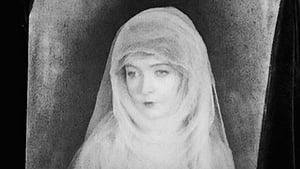Video Sources 0 Views

Synopsis
The White Sister (1923): A Classic Reimagined in Color

Dive into the world of The White Sister, a poignant silent drama originally released in 1923, now meticulously colorized for a viewing experience that bridges the past and present. This cinematic gem, directed by Henry King and starring Lillian Gish and Ronald Colman, tells a story of love, loss, and devotion set against the backdrop of early 20th-century Italy42.
Movie Storyline
The White Sister centers on Angela Chiaromonte (Lillian Gish), a young Italian woman of noble birth who falls deeply in love with Captain Giovanni Severini (Ronald Colman) . Their romance is threatened by familial strife and societal expectations. Tragedy strikes when Giovanni is reported dead while on a military expedition in Africa . Devastated, Angela chooses to dedicate her life to God, becoming a nun, a “White Sister”. However, fate intervenes when Giovanni returns, forcing Angela to confront her vows and the love she thought lost forever .
Movie Cast
- Lillian Gish as Angela Chiaromonte
- Ronald Colman as Captain Giovanni Severini
- Gail Kane as Marchesa di Mola
- J. Barney Sherry as Monsignor Seracinesca23
- Charles Lane as Prince Chiaromonte
Movie Genre
Drama, Romance, Silent Film22
Historical Context
Produced by Inspiration Pictures, The White Sister was filmed on location in Italy, utilizing the stunning landscapes of Rome, Sorrento, and Mount Vesuvius to enhance its dramatic narrative . The film is based on the 1909 play by F. Marion Crawford and Walter C. Hackett . Lillian Gish’s performance was widely acclaimed, solidifying her reputation as one of the leading actresses of the silent era . The film captures the melodramatic style popular in the 1920s, reflecting the social and religious tensions of the time4.
Colorization Details
This edition of The White Sister has been carefully colorized, adding a new layer of depth and immersion to the classic film . The colorization process enhances the visual storytelling, bringing out the nuances of the set design, costumes, and the actors’ expressions. While preserving the integrity of the original black and white footage, the added color breathes new life into this timeless story.
Other Titles
De Witte Zuster (Dutch)26
Technical Specifications
Experience The White Sister in stunning high definition. This download offers the best possible viewing experience, optimized for modern devices.
Cast and Crew
- Directed by: Henry King
- Starring: Lillian Gish, Ronald Colman
- Based on the play by: F. Marion Crawford, Walter C. Hackett
- Cinematography: Roy F. Overbaugh, William Schurr, Fernando Risi3
- Edited by: W. Duncan Mansfield3
- Music by: Joseph Carl Breil3
- Production Company: Inspiration Pictures
- Distributed by: Metro Pictures
Technical Details
- Download Format: MP4
- Resolution: HD (1080p)
- Compatibility: Compatible with all modern devices (smart TVs, computers, tablets, and smartphones)
















